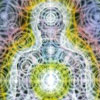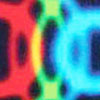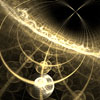The Soul And Quantum Physics
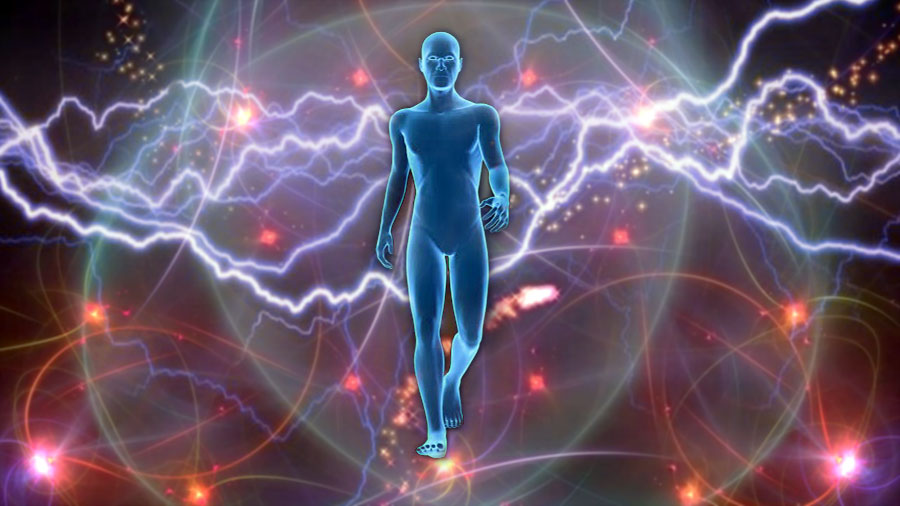 An interview with Dr. Fred Alan Wolf
An interview with Dr. Fred Alan Wolf
Dr. Fred Alan Wolf earned a Ph.D. in theoretical physics from U.C.L.A. He continues to write, lectures th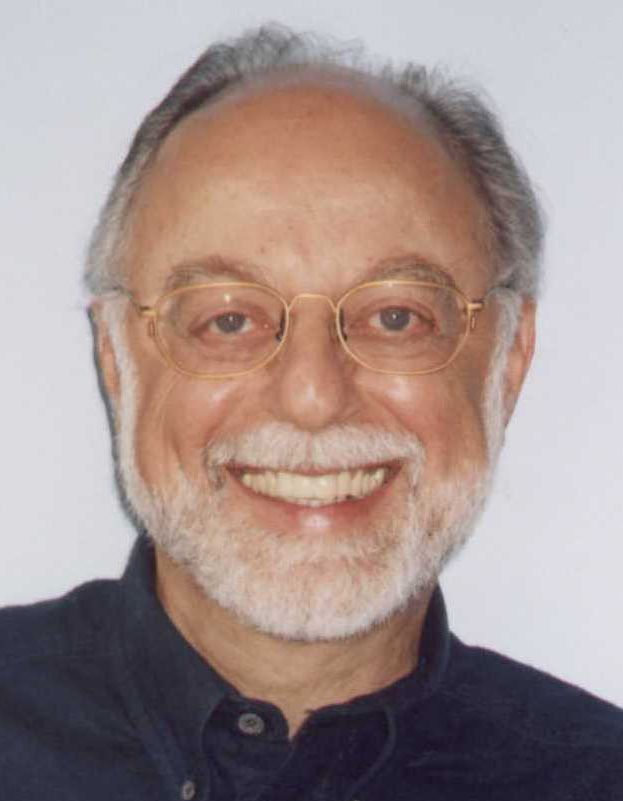 roughout the world, and conducts research on the relationship of quantum physics to consciousness. He is the National Book Award Winning author of Taking the Quantum Leap and many other books including The Spiritual Universe. Dr. Wolf has taught at the University of London, the University of Paris, the Hahn-Meitner Institute for Nuclear Physics in Berlin, The Hebrew University of Jerusalem, and San Diego State University in the United States.
roughout the world, and conducts research on the relationship of quantum physics to consciousness. He is the National Book Award Winning author of Taking the Quantum Leap and many other books including The Spiritual Universe. Dr. Wolf has taught at the University of London, the University of Paris, the Hahn-Meitner Institute for Nuclear Physics in Berlin, The Hebrew University of Jerusalem, and San Diego State University in the United States.
“ . . . the most important phenomena not dealt with by our physical theories are those of life and consciousness. … Even if the physical theories could completely describe the motions of the atoms in our bodies, they would not give a picture of the content of our consciousnesses, they would not tell us whether we experience pain or pleasure, whether we are thinking of prime numbers or of our granddaughters. This fact is, in my opinion,the most obvious but also the most convincing evidence that life and consciousness are outside the area of present day physics.” ~ Eugene Wigner, Nobelist
Q. Many scientists question whether the soul exists. Many others in our culture question whether the soul has any relevance in a scientifically oriented, technologically trained modern society. Because science is largely responsible for portraying the world as merely a collection of mechanical parts acting on each other, some people feel a little uncomfortable when a quantum physicist such as myself attempts to define the soul in scientific terms. Nevertheless, more and more people are concerned with questions dealing with the soul, the human spirit and spirituality.
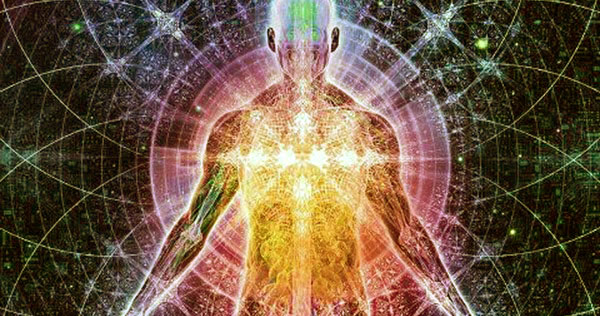 Is there something about “who we are” that is capable of tuning into the finer, higher vibrations of the soul?
Is there something about “who we are” that is capable of tuning into the finer, higher vibrations of the soul?
A. This is really a very old question. It started off a great debate thousands of years ago in ancient Greece between the followers of Plato and his student, Aristotle.
Plato believed that the physical senses were always going to cloud our perception of the universe. According to Plato, the mere fact that someone is embodied makes our perceptions somewhat distorted, somewhat inaccurate, somewhat of an illusion. While working at the level of the body and the senses, Plato thought that we could never quite experience things as they are “in reality.” He taught there was a more perfect, non-material realm of existence.
In contrast, Aristotle taught there is no world outside of our senses. Nowadays, scientists have invented sophisticated scientific instruments such as microscopes and telescopes to extend the power of our senses, but the majority of scientists still share Aristotle’s basic worldview.
I believe that the findings of quantum physics increasingly support Plato. There is evidence that suggests the existence of a non-material, non-physical universe that has a reality even though it may not as yet be clearly perceptible to our senses and scientific instrumentation. When we consider out-of-body experiences, shamanic journeys and lucid dream states, though they cannot be replicated in the true scientific sense, they also point to the existence of non-material dimensions of reality.
Now most of us were not trained to look for and experience our souls. We’ve been more or less trained to look for things that can be grasped–things that are physical and solid. But the soul is not tangible, physical or solid. You cannot just reach out and touch the soul. Yet, the soul as an animating principle in the universe is ultimately more important than anything that is physical or tangible.
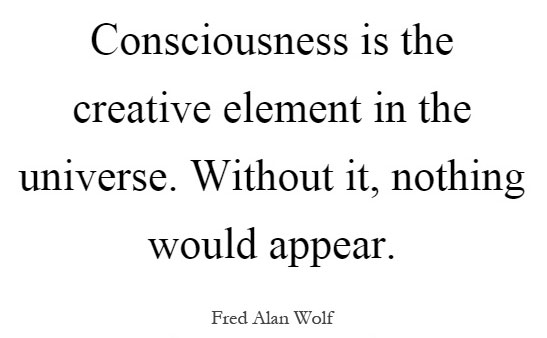 Q. The question then arises, “How is it that more people do not directly experience the presence of their souls?” They may read about the soul, they may believe in the soul, but if the soul is a reality, why do they feel a sense of soul loss, an absence of the soul in their lives?
Q. The question then arises, “How is it that more people do not directly experience the presence of their souls?” They may read about the soul, they may believe in the soul, but if the soul is a reality, why do they feel a sense of soul loss, an absence of the soul in their lives?
A. The answer may be found in the nature of the soul itself. The soul is alive and vibrant yet experienced subjectively. The world that we see with our everyday eyes–through the filter of our senses– is derived from a more “objective” world. It seems that the “out there” objective world and the subjectively experienced “soul world” are in conflict with each other. This corresponds to what spiritual teachers have been saying about what happens when living spirit descends into objective matter–there’s a fight. So if we become too involved with the objective, external processes of life, we tend to lose touch with perception from the level of our soul. It’s when we go within into an internal quietness, as in meditation, we can begin to perceive something which is deeper and more meaningful than just the objective “out there-ness.” So it’s really important for those of us who have lost touch with our souls to spend some quiet time—not in thinking, not in going over the day’s list of everything that has to be done—but in being with yourself in ways that allow a deeper inner reality to bubble up from within your consciousness.
Q. Some people have difficulty accepting that something can be real but not physical. Is there anything in science that is real but not physical?
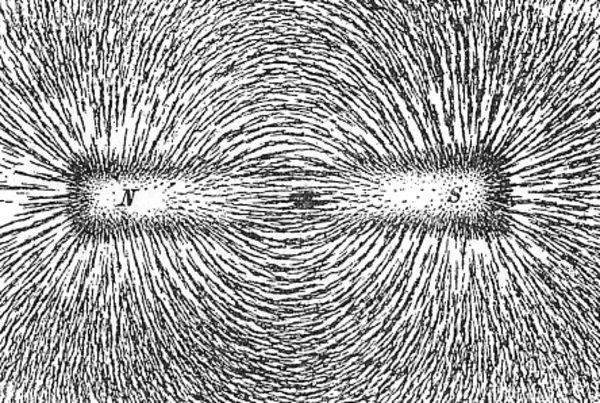 A. The answer is yes. Magnetism is a well-researched area of study where we have demonstrated the existence of something that is real, and yet not solid or tangible. In science class as children, you might have seen how the horseshoe-shaped, bar magnet moved the iron fillings into magnetic field patterns without the magnet having to physically touch the iron fillings to move them around. So the effects of magnetism clearly demonstrates that something may exist, is real, is not physical and solid, yet it can fill space and move in time–as we know magnetic fields do. If a common phenomenon like a magnetic field acting on iron filings can do this, could not the soul be an invisible, nonmaterial, super-intelligent, animating force that similarly acts on and through the human body and the universe?
A. The answer is yes. Magnetism is a well-researched area of study where we have demonstrated the existence of something that is real, and yet not solid or tangible. In science class as children, you might have seen how the horseshoe-shaped, bar magnet moved the iron fillings into magnetic field patterns without the magnet having to physically touch the iron fillings to move them around. So the effects of magnetism clearly demonstrates that something may exist, is real, is not physical and solid, yet it can fill space and move in time–as we know magnetic fields do. If a common phenomenon like a magnetic field acting on iron filings can do this, could not the soul be an invisible, nonmaterial, super-intelligent, animating force that similarly acts on and through the human body and the universe?
To further explore the possible nature of the soul in scientific terms, we can look into the heart of quantum physics. It has to be said at the outset that the study of quantum physics is a very difficult realm to investigate because the objects and forces that are studied by quantum physics are usually infinitesimally small. As we go down to the level of sub-atomic particles, scientists find that these particles are moving so rapidly that we can’t follow them as we would follow an ordinary larger object moving in ordinary space. The movements and properties of these very small objects do not follow the old ways of thinking found in classical physics that were developed by Sir Issac Newton and others. On this sub-atomic level of existence, Newtonian physics simply doesn’t work. So a new form of physics had to be created to adequately account for the phenomena we observed.
On the sub-atomic level, particles don’t simply move from point A to point B in a continuous fashion. Instead, these particles move in “quantum jumps.” Particles virtually leap from one place to another. These atomic jumping processes create all visible light. In order to understand how this works, we first have to understand how light behaves in atoms.
We have found that light-emitting electrons inside atoms are actually quantum leaping from one place to another, instantaneously. Though this is sometimes hard for the mind to conceive, we know this is a fact because we have tested and verified mathematical equations with actual experiments in the field. The phenomena observed in these experiments match the theoretical equations very well.
Quantum physicists have also demonstrated in experiments with sub-atomic particles that certain fields have a kind of intelligence and seem to be able to do things that ordinary fields can’t do. One very strange process that physicists observe is that electrons simply vanish, in a puff of light, when they interact with certain other particles. In the beginning, we didn’t know why this happened. Then we realized that these vanishing electrons were interacting with anti-matter. Because anti-matter electrons moved oppositely to electrons, when the opposing particles met, they seemingly annihilated each other. When we studied anti-matter more closely, we began to speak about anti-matter as being “bubbles in the absolute vacuum of empty space.”
“I regard consciousness as fundamental. I regard matter as derivative from consciousness.” ~ Max Planck
Q. What is this “absolute vacuum of empty space?”
A. Well, how many of you have ever fallen asleep watching television late at night and when you awoke, you heard the static hushing noise from your television screen? That noise, produced by the electronics inside the television receiver, is the amplified sound of this “vacuum of space.” Many quantum physicists, including myself, believe that the entire universe, the entire creation, was created out of the “absolute nothingness of the vacuum of space.” It appears this “vacuum of nothingness” is intelligent, active, and has a consciousness. The source of the soul proceeds from, and is present in, this vacuum.
 Q. Some people talk about the Light that is seen at the moment of death and in near-death experiences. What is this?
Q. Some people talk about the Light that is seen at the moment of death and in near-death experiences. What is this?
A. From a scientific standpoint, it is difficult to say exactly what is going on. And the reason why we don’t know is because we have no idea where the viewer is that sees this Light. As an example, right now, you have some sense of being present in your body looking out at the world. But according to what we know from physics, this is an illusion of perception: There is no place inside your body where “you” actually exist. You don’t have a particular volume of space or spot that is “you.” It is an illusion to think that everything outside that volume of space is “not you”–what you commonly say is “outside of you.”
The best description we can give for this sense of presence is that you “are everywhere.” The main reason that you have more awareness of being in a body is simply because the sensory apparatus of the body commands a great deal of your attention and that much of your attention is linked to your physical senses. We have the illusion that our human bodies are solid, but they are over 99.99% empty space.
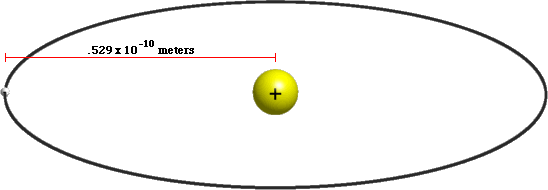 If an atom is blown up to the size of an entire football stadium, the dense part of the atom would be comparable to the size of a single grain of rice placed on the 50 yard line. Now why is that important? Because in an atom, the nucleus accounts for 99.99% of all of the matter or mass. Atoms are mostly made of space. So although we experience ourselves as being these solid human bodies, it’s more like “who we are” is an awareness or consciousness that lives in space.
If an atom is blown up to the size of an entire football stadium, the dense part of the atom would be comparable to the size of a single grain of rice placed on the 50 yard line. Now why is that important? Because in an atom, the nucleus accounts for 99.99% of all of the matter or mass. Atoms are mostly made of space. So although we experience ourselves as being these solid human bodies, it’s more like “who we are” is an awareness or consciousness that lives in space.
“All matter is merely energy condensed to a slow vibration. We are all one consciousness experiencing itself subjectively. There is no such thing as death, life is a dream, and we’re the imagination of ourselves.” ~ Bill Hicks
Q. Some people may wonder, what is the “light at the end of the tunnel” phenomenon that sometimes occurs in near-death experiences and probably at the moment of death as well?
A. Let me offer a possibility here. Though all material objects cannot, by definition, travel faster than the speed of light, there is evidence that the soul, which is non-physical and therefore not confined by movements in the material world, can travel faster than the speed of light. Traveling faster than the speed of light is called “superluminal speed.”
So at the time of death, or during a near-death experience, it may very well be that the person transitions from the material world–that operates at speeds less than the speed of light–to a world that operates faster than light speed, the so-called “superluminal” spiritual world. In that transfer, a tunneling effect may take place in much the same way that it appears to take place in what astrophysicists call a “black hole.”
Now this is where it gets really interesting. At the superluminal speed of the soul, we go beyond time and space as we experience it in this physical dimension. We then have the phenomenon of being able to move both forward and backward through time/space. People who come back from a near-death experience describe something like this. What these people are very likely experiencing are windows into that kind of time/space dimension of reality.
“The stream of knowledge is heading toward a non-mechanical reality; the universe begins to look more like a great thought than like a great machine. Mind no longer appears to be an accidental intruder into the realm of matter, we ought rather hail it as the creator and governor of the realm of matter.” ~ Sir James Jeans
Q. Many people also report, either at the moment of their death, or those who’ve come back after a near-death experience, that they have had experiences not only of seeing their loved ones that have departed, but also meeting what I call “super-luminary figures” such as Jesus, Mother Mary, Moses, Krishna or any other sacred personages. Can this be explained?
A. The specific super-luminary figure that appears is usually based a person’s upbringing–Jesus appears to Christians, Krishna for Hindus, etc. But why do these particular beings manifest in our consciousness? Well, I believe these figures are symbolic representations of our spiritual ideals.
On a higher level, everyone embodies the archetypal aspects of Jesus, Krishna, Mohammed, etc. These archetypes of our ideals heal our sense of soul loss and serve our spiritual revival to help us remember a part of us that we usually forget about in everyday life. The physics of the process of experiencing these beings involves an interaction between our soul and our body-mind. This is nothing less than the “physics of God” that we’re talking about.
Q. Some may wonder, “All right, if quantum physics offers evidence for the existence of the soul, where is God in this picture?
A. Let me offer a speculative but scientifically grounded view of God. First, in speaking about any phenomena, including God, scientists prefer to say that something or someone behaves in this way, or that way, rather than say that something is or someone does this or does that. So, using this scientific terminology, how does God behave in the universe? Well, if we read the Bible, God seems to behave in very paradoxical ways. But there is one way that God behaves that seems to be very relevant to this discussion: God creates. God is considered the ultimate Creator of all that is. If that’s the case, is it possible to speak about a “physics of God’s behavior” that explains how God creates?
So what we call God continues to create, with infinite intelligence, every billionth of a billionth of second, now and for billions and billions of years to come. What is created with this perfect intelligence reflects and modifies everything at every instant and at every level. This happens from the smallest electron to the largest galaxy, including all forms of life in the universe.
Now on a human level, some people view their lives and get upset. They think, Oh God, what did I live for? Isn’t it terrible that I’m going to die? Life was black when it started. Life was black when I was here. And it’s going to be black again when life ends! Oh, God, what’s it all about? In my view, even this blackness and despair has been designed into God’s system. You may not completely believe or even remember this in this moment, but you have actually created all of it. Now, the “you” that created it all, is not the person, the personality, the one inside you that identifies oneself as “I’m Joe, I’m Martha, I’m Sam”–that’s not that person I am speaking to or about. It’s the greater essence of “I,” this deeper presence, the working of consciousness itself that is in you, in me, in everyone. That “I,” working through this body, is the same you that is reflected in the archetypal images of Jesus, Moses, Mohammed, Krishna, all of whom remind us of our true essence. The presence of these beings are but reflections or representations of our own identification with our greater, deeper “I’“ self.
When Einstein died, researchers were interested in examining his brain to see whether there was something special about it that made him a genius. Aside from a greater amount of glial cells in his visual cortex, there wasn’t. His brain is still in a jar at Princeton University. We’re not going to find what makes one person smart and one person stupid by looking at their brains, unless, of course, there’s an obvious physical impairment. So we’re not going to find the source of intelligence and the soul in the material world.
I want to know God’s thoughts, the rest are details. ~ Albert Einstein
I don’t see the soul and consciousness as an epiphenomenon, or product, of matter. It’s just the other way around: I see matter as an epiphenomenon of soul and consciousness. The material world has evolved from the absolute vacuum of space–the home of the soul.
Posted in Science For The New Agewith comments disabled.



